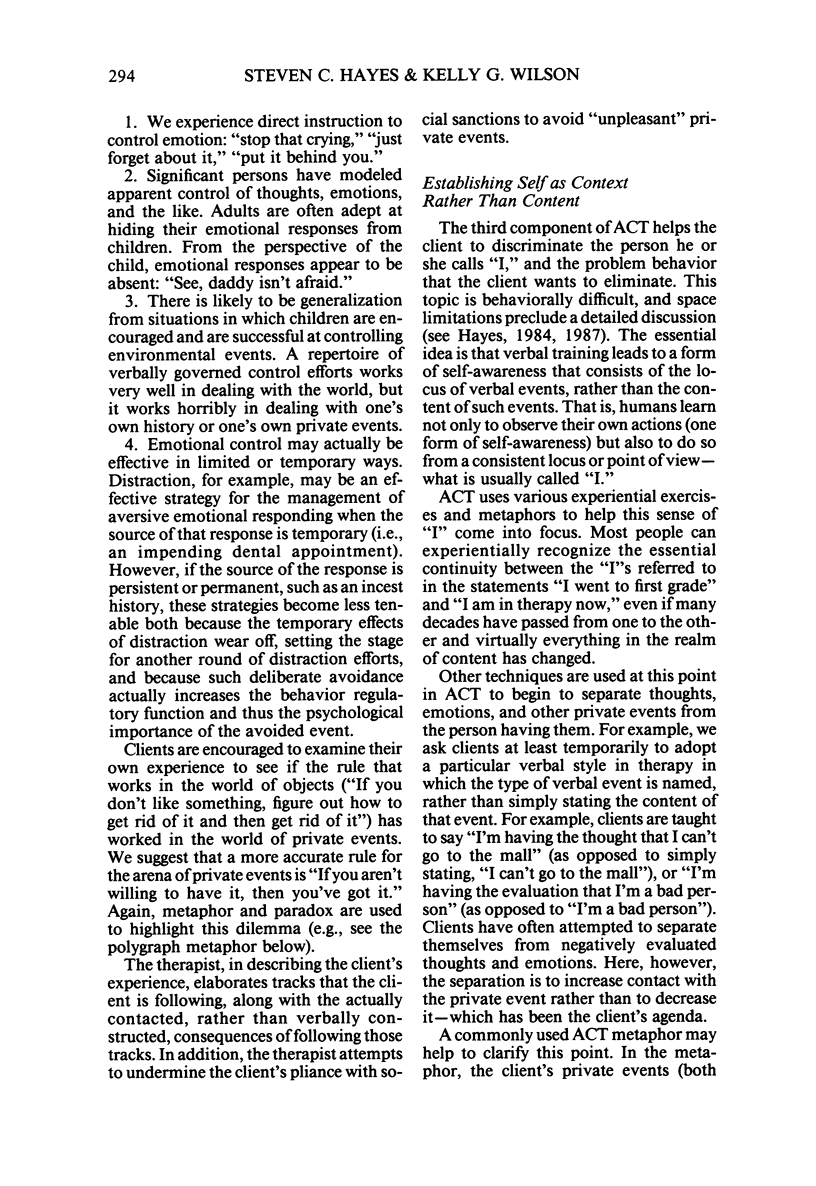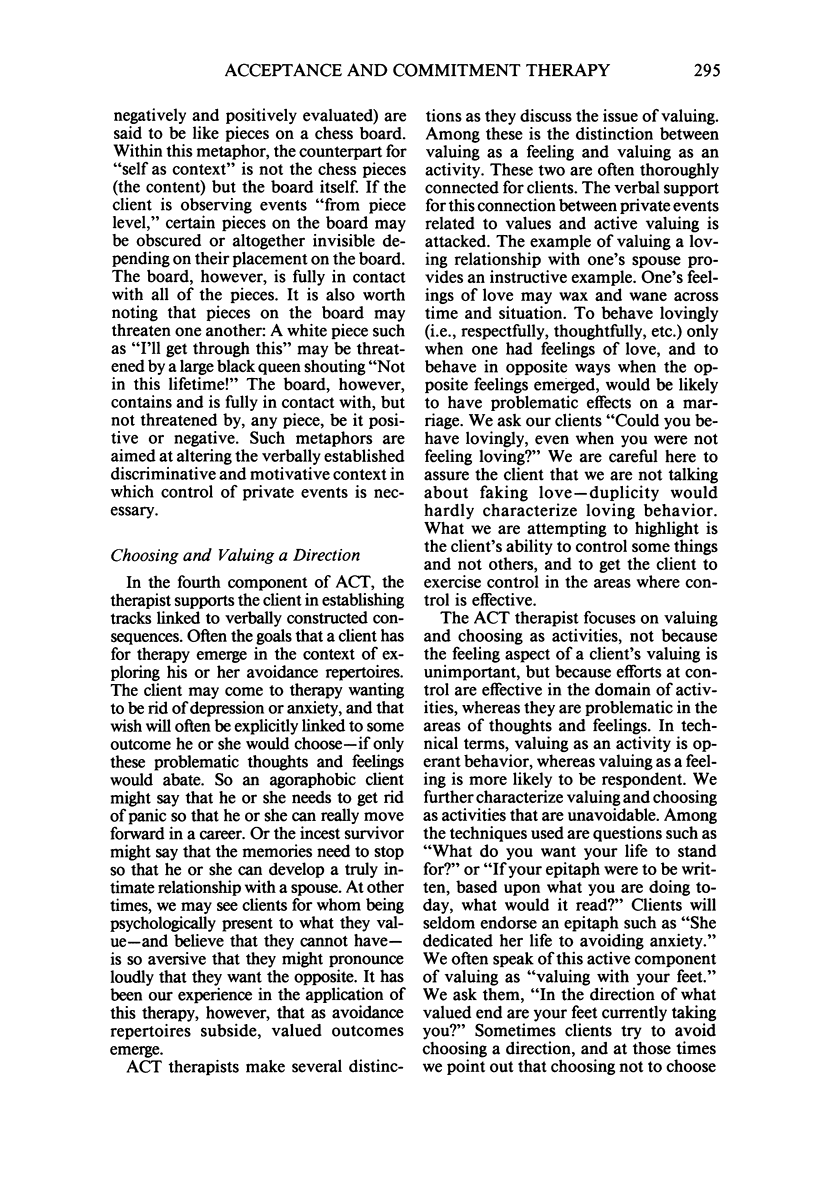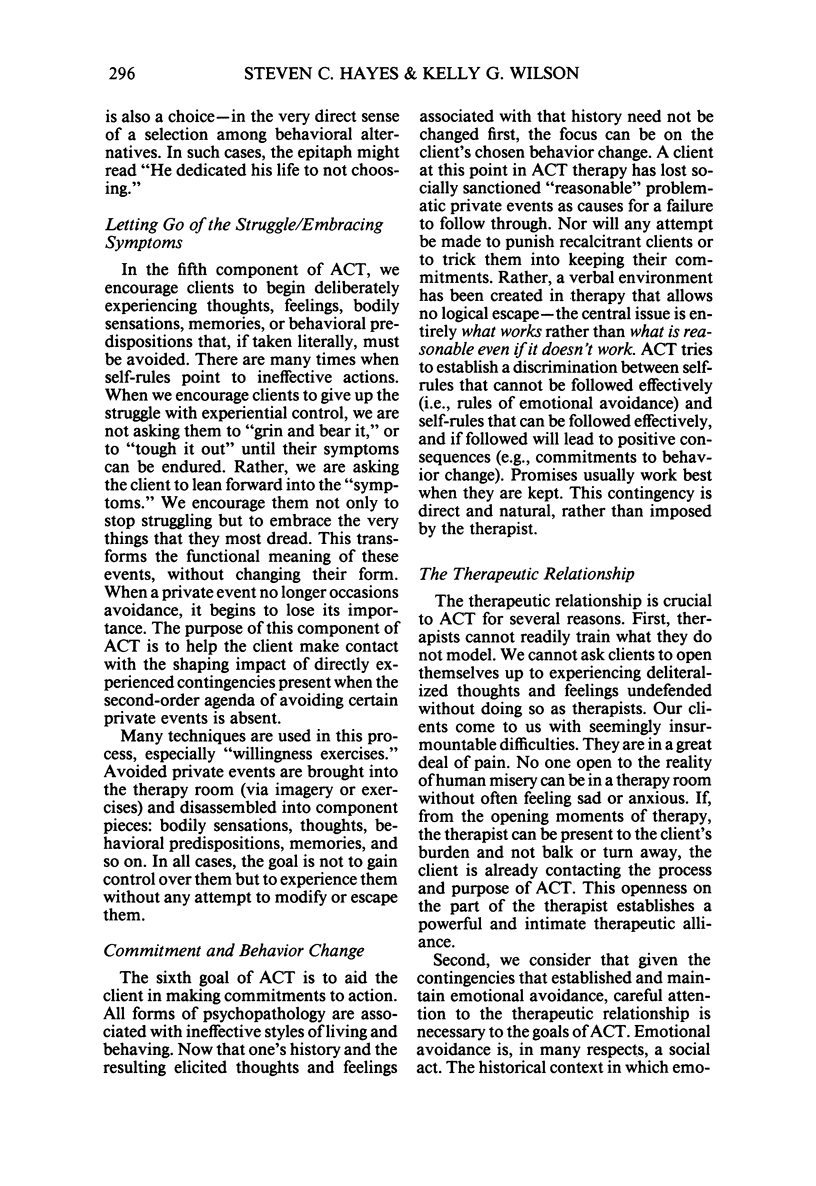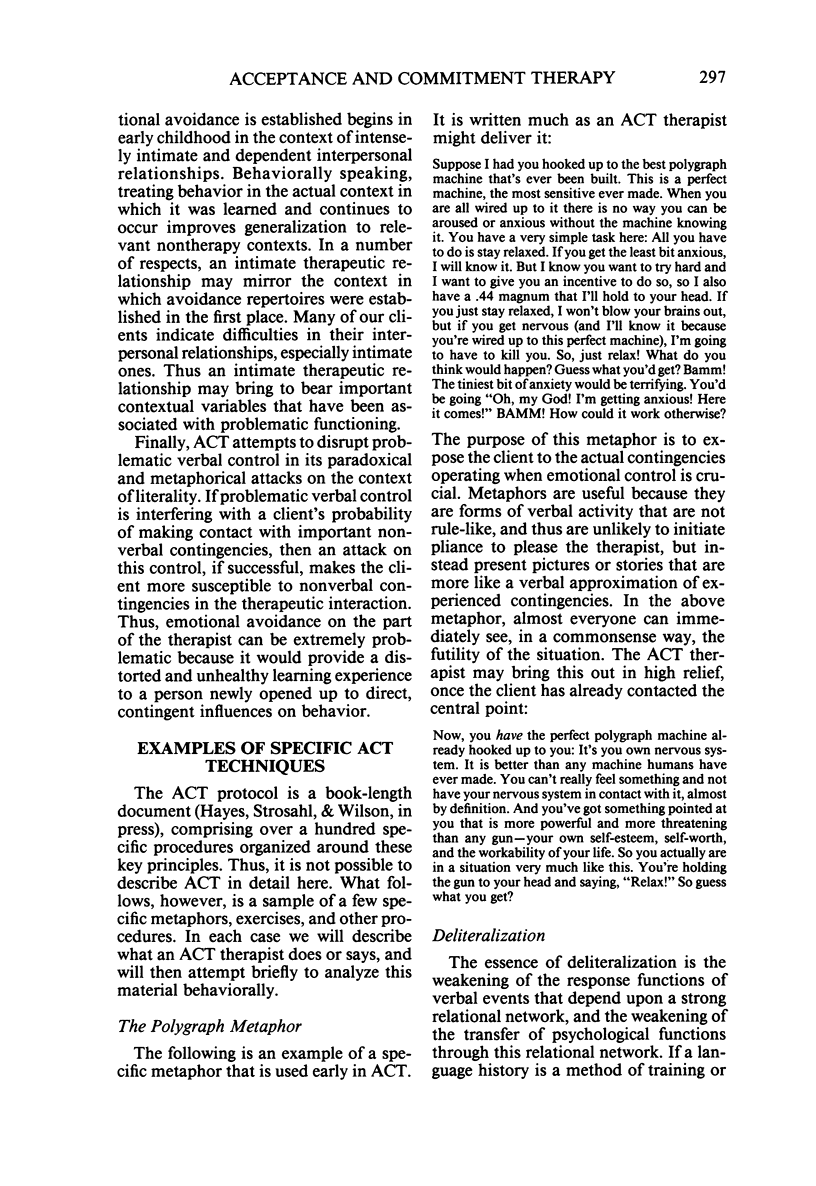Abstract
Acceptance and Commitment Therapy (ACT) is a behavior-analytically-based psychotherapy approach that attempts to undermine emotional avoidance and increase the capacity for behavior change. An overview of this approach is given, followed by several specific examples of the techniques used within ACT. In each instance the behavioral rationale of these techniques is described. A contemporary view of verbal relations provides the basis for new approaches to adult outpatient psychotherapy.
Keywords: rule-governed behavior, emotions, psychotherapy, Acceptance and Commitment Therapy, cognition
Full text
PDF














Selected References
These references are in PubMed. This may not be the complete list of references from this article.
- Hayes S. C., Hayes L. J., Reese H. W. Finding the philosophical core: A review of Stephen C. Pepper's World Hypotheses: A Study in Evidence. J Exp Anal Behav. 1988 Jul;50(1):97–111. doi: 10.1901/jeab.1988.50-97. [DOI] [PMC free article] [PubMed] [Google Scholar]
- Hayes S. C., Kohlenberg B. S., Hayes L. J. The transfer of specific and general consequential functions through simple and conditional equivalence relations. J Exp Anal Behav. 1991 Jul;56(1):119–137. doi: 10.1901/jeab.1991.56-119. [DOI] [PMC free article] [PubMed] [Google Scholar]
- Hayes S. C., Wilson K. G. Some applied implications of a contemporary behavior-analytic account of verbal events. Behav Anal. 1993 Fall;16(2):283–301. doi: 10.1007/BF03392637. [DOI] [PMC free article] [PubMed] [Google Scholar]
- Kohlenberg B. S., Hayes S. C., Hayes L. J. The transfer of contextual control over equivalence classes through equivalence classes: a possible model of social stereotyping. J Exp Anal Behav. 1991 Nov;56(3):505–518. doi: 10.1901/jeab.1991.56-505. [DOI] [PMC free article] [PubMed] [Google Scholar]
- Kohlenberg R. J., Tsai M., Dougher M. J. The dimensions of clinical behavior analysis. Behav Anal. 1993 Fall;16(2):271–282. doi: 10.1007/BF03392636. [DOI] [PMC free article] [PubMed] [Google Scholar]
- Sidman M., Tailby W. Conditional discrimination vs. matching to sample: an expansion of the testing paradigm. J Exp Anal Behav. 1982 Jan;37(1):5–22. doi: 10.1901/jeab.1982.37-5. [DOI] [PMC free article] [PubMed] [Google Scholar]
- Wulfert E., Hayes S. C. Transfer of a conditional ordering response through conditional equivalence classes. J Exp Anal Behav. 1988 Sep;50(2):125–144. doi: 10.1901/jeab.1988.50-125. [DOI] [PMC free article] [PubMed] [Google Scholar]
- Zettle R. D., Rains J. C. Group cognitive and contextual therapies in treatment of depression. J Clin Psychol. 1989 May;45(3):436–445. doi: 10.1002/1097-4679(198905)45:3<436::aid-jclp2270450314>3.0.co;2-l. [DOI] [PubMed] [Google Scholar]


